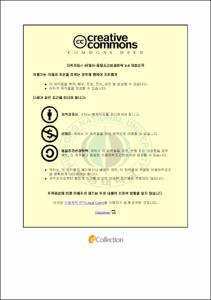수산물 시장의 유통단계별 가격전달의 비대칭성에 관한 실증 분석
- Alternative Title
- An Empirical Study on Asymmetric Price Transmissions in the Distribution Channels of Fisheries Market
- Abstract
- This paper tries to apply the asymmetrical price transmission(APT) behavior observed in the agricultural industry to supply chains of the domestic fishery industry by a statistical manner. The fore mentioned asymmetrical price transmission refers to when price movements in the later stage of the supply chain do not move in a normal or symmetrical manner corresponding to price movements in the earlier stage of the supply chain. Therefore, when the earlier stage price increase and the later stage price increases to a larger degree, it is called positive(+) asymmetry and the opposite behavior is called negative(-) asymmetry. The study examines the data from domestic producers of three fresh fish types, hairtail, mackerel, and cuttlefish, and tries to examine the price asymmetry between the producer or farm, wholesaler, and retail prices via an APT test utilizing unit root, cointegration, and error correction model. The study found, hairtail wholesale and retail pricing has a negative asymmetric relationship while mackerel has a negative asymmetric pricing relationship at the producer and retail levels of the supply chain. In the case of cuttlefish, all levels of the supply chain showed negative asymmetrical behavior in the supply chain price transmission, meaning the earlier stage price changes are more rapidly and greatly inputted in the later stage of the supply chain pricing. We believe that the reason why the analysis results show negative price asymmetry is due to the uniqueness of fishery products having an important variable such as freshness. If price increases are greater and quicker than price decreases, then consumer demand, which is sensitive to price increases will decrease and subsequently result in the increase of inventory levels, reducing profits for retailers. Also, frozen hairtail, mackerel, and cuttlefish will act as substitute goods to fresh fishery products. Therefore, fresh fishery products have a high demand of price elasticity. When prices increase, demand quickly decreases. Therefore the profit of wholesalers and retailers to decrease, I think this is the main reason of APT in the supply chain of Korea's fisheries industry.
- Issued Date
- 2011
- Awarded Date
- 2011. 2
- Type
- Dissertation
- Publisher
- 부경대학교
- Alternative Author(s)
- Lee, Jung Mi
- Affiliation
- 부경대학교 일반대학원
- Department
- 대학원 국제통상물류학과
- Advisor
- 김기수
- Table Of Contents
- Ⅰ. 서 론 1
1.1 연구배경 및 목적 1
1.2 연구내용 및 방법 3
1.3 논문구성 4
Ⅱ. 선행연구의 고찰 6
2.1 수산물 유통단계별 가격전달구조에 관한 연구 6
2.2 가격전달의 비대칭성에 관한 연구 8
Ⅲ. 우리나라 수산물의 수급실태 및 유통구조 14
3.1 우리나라 수산물의 수급실태 14
3.2 수산물의 유통구조 19
Ⅳ. 분석의 이론적 기초 24
4.1 가격전달 비대칭성의 개념 및 이론적 모형 24
4.2 단위근, 공적분 및 오차수정모형 (ECM) 27
4.3 변수설정 및 자료수집 31
4.4 추정함수식 36
Ⅴ. 실증분석 결과 40
5.1 단위근 검정 40
5.2 공적분 검정 43
5.3 수산물 유통단계별 비대칭성 검정 47
5.3.1 갈치의 비대칭성 검정 48
5.3.2 고등어의 비대칭성 검정 50
5.3.3 오징어의 비대칭성 검정 52
Ⅵ. 요약 및 결론 54
59
62
- Degree
- Master
- Appears in Collections:
- 대학원 > 국제통상물류학과-FTA비즈니스전공
- Files in This Item:
-
-
Download
 수산물 시장의 유통단계별 가격전달의 비대칭성에 관한 실증 분석.pdf
기타 데이터 / 17.66 MB / Adobe PDF
수산물 시장의 유통단계별 가격전달의 비대칭성에 관한 실증 분석.pdf
기타 데이터 / 17.66 MB / Adobe PDF
-
Items in Repository are protected by copyright, with all rights reserved, unless otherwise indicated.